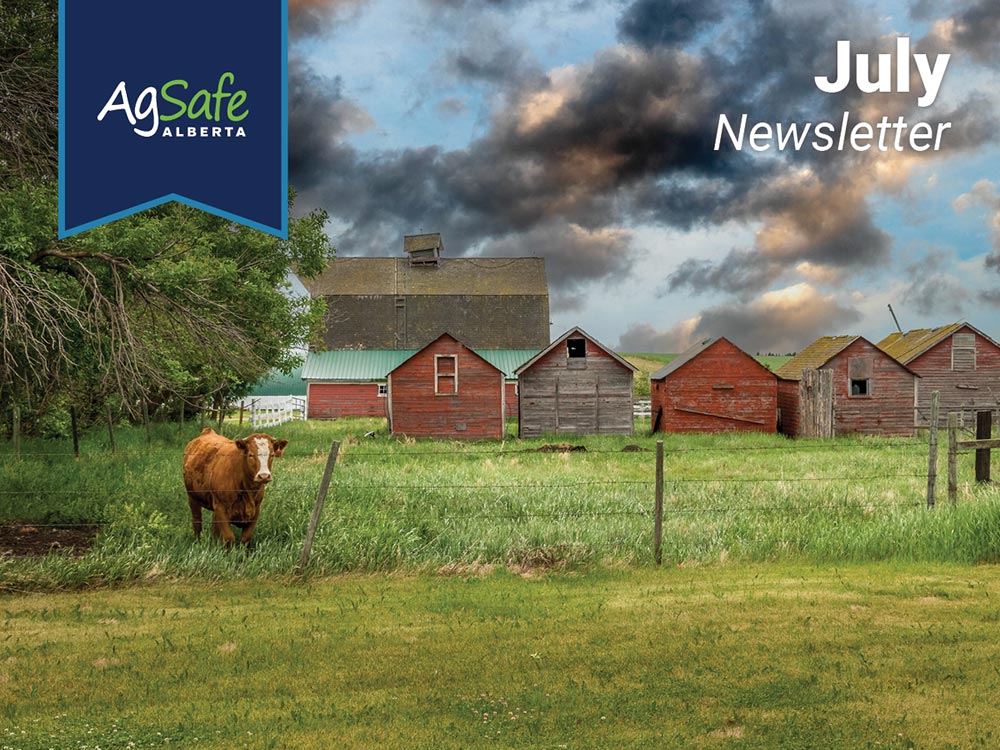
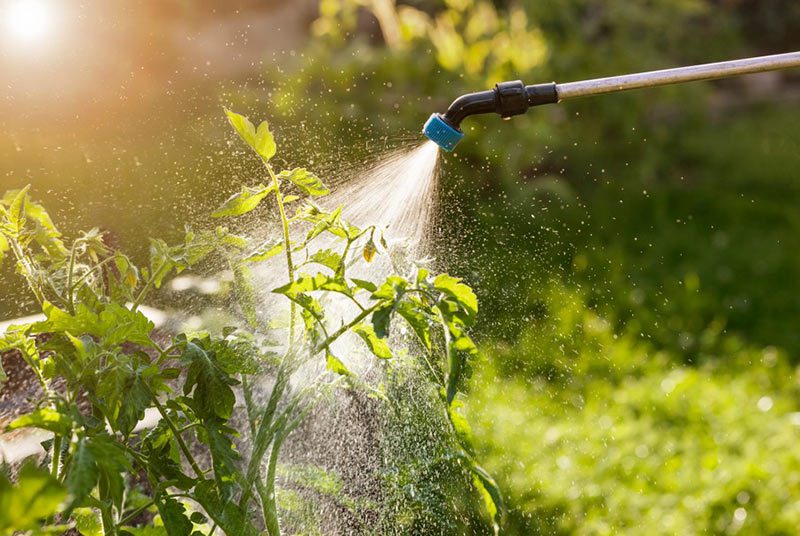
Pesticide Handling on Farms Under Scrutiny
The United Food and Commercial Workers Canada (UFCW Canada), a large workers’ union, is suing Health Canada over what they call “an unlawful failure to protect agricultural workers by failing to enforce safety data sheet requirements under the federal Pest Controls Products Act (PCPA).”
At this point, the UFCW wants Health Canada to legally enforce the provision of pesticide safety data sheets to employers as what they call a “first step” (so it is possible that more may come from this and from other governing bodies). It is important to note that while Health Canada encourages pesticide manufacturers to provide safety data sheets for their products, this is not legally required under the Hazardous Products Act (HPA).
The argument: Workers, especially migrant workers, do not have access to critical information about the chemicals they are handling, and as a result, are unable to take the necessary protective measures.
What is being looked at: One worker’s experience being highlighted by the UFCW indicates that the farm worker had been given hazardous products to use, but without the necessary training and personal protective equipment, resulting in exposure and negative health consequences.
What legislation already applies: In Alberta, the Occupational Health and Safety Act requires farm employers to do everything reasonably practicable to protect the health and safety of their workers; this includes ensuring that farm workers are trained and competent, and that all reasonable hazard control measures (beyond providing basic personal protective equipment) are in place to protect workers.
If you don’t already have some form of chemical management system in place on your farm, you can start creating one using the resources listed below.
- Chemical Safety Checklist
- WHMIS, Pesticide, Veterinary Drug and Medicated Feed Awareness Course
- WHMIS, Pesticide, Veterinary Drug and Medicated Feed Awareness Manual
- Request Advisor Support (You could get up to 10 hours of free help!)
Learn more about the lawsuit: Large workers union sues Health Canada over pesticide safety failures
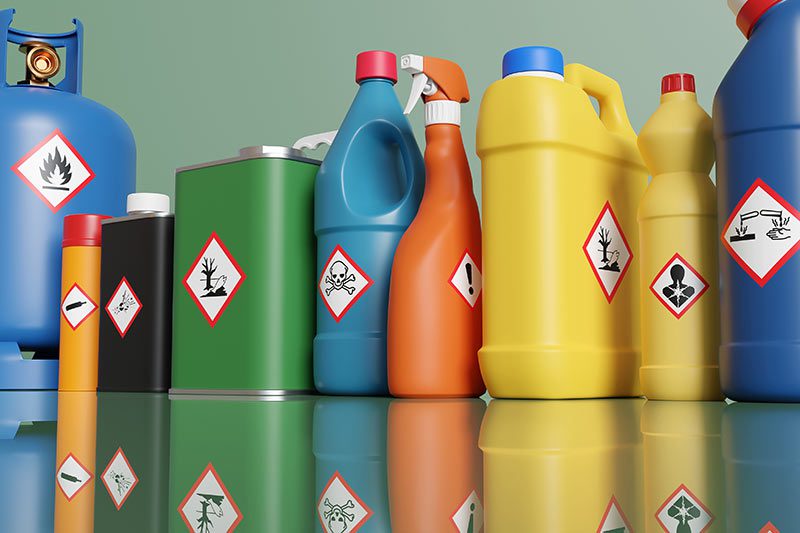
Chemicals on the Farm
How often do you check on how you are storing, mixing, loading, and moving chemicals on your farm? Do you do it before handling and using chemicals, once a year, once every two years or never?
Read these points and download the checklist located at the bottom of this article to spot any areas that need improvement on your farm.
Chemical Storage
- When storing chemicals, are you using appropriate forms of spill containment in case of a leak?
- Are you inspecting containers regularly to ensure labels are present and readable, lids are tight and the containers are in good overall condition?
- Are containers protected as directed by the safety data sheet? This can include protection from punctures, impacts, freezing, heating, etc.
- Are chemicals stored away from incompatible products and materials? These will be listed in the safety data sheet.
- Are you using storage equipment designed/appropriate for the material (e.g., flammables should be stored in a grounded flammables cabinet)?.
- Are there warning signs posted?
- Are chemicals stored away from ignition sources (e.g., heat, sparks, open flames)? Even if the product may not be flammable, the packaging may be.
- How much chemical are you storing? It is best to avoid storing large quantities of products wherever possible.
- Many commonly used products should be stored in a cool, dry, well-ventilated area away from direct sunlight and exits (or the path of travel to an exit).
- Are there locked doors, cabinets, etc., that prevent unauthorized individuals, children, pets and/or livestock from accessing chemicals and chemical storage areas?
- Does everyone know not to smoke, eat or drink in storage areas? Does everyone practice good hygiene, such as washing their hands thoroughly after working in chemical storage areas?
Chemical Handling
- Is everyone using the product(s) properly trained? This includes not only general WHMIS training, but farm-specific training as well.
- Does everyone know to always use the smallest amount possible?
- Before use, does everyone know to check the label and safety data sheet for information about the hazards and necessary precautions for the product being used?
- Does everyone understand the importance of preventing a spill, leak or release of vapour? Do they keep the lids or valves closed wherever possible?
- Are hazard control measures taken to prevent dusts, mists or residues from building up on surfaces / in work areas?
- What measures are taken to avoid the chemical from coming into contact with skin, clothing or other surfaces?
- What measures are taken to prevent someone from inhaling dusts, mists, vapours, etc.?
- Are products used in well-ventilated areas?
- Are chemicals and their containers protected from punctures, impacts, freezing, heating, etc. (as directed by the safety data sheet)?
- Are containers inspected before each use to ensure labels are present and readable, and that the containers are in good overall condition?
- Do the people using these products know how to remove contaminated clothing and other materials carefully? Once removed, do they know how to handle, wash or discard them as directed by the farm’s procedures and the safety data sheet?
- Do the people using these products know not to smoke, eat or drink in handling or other work areas? Do they wash their hands thoroughly after handling (even if they wore gloves) and before eating, drinking, smoking/vaping or using the toilet?
In Case of a Spill or Related Emergency
- Do the people using the product(s) know what signs of exposure are and how serious exposure could be? Do they know what to do in the event of an exposure?
- Do the people using the product(s) understand the emergency procedures and spill response procedures?
- Do the people using the product(s) know what the right type of personal protective equipment (PPE) is, and is it available to them? Are the people using PPE trained in its selection, fit, use and care?
- Are the correct type of fire extinguishers available, fully charged and easily accessible?
- Are eyewash stations, bottles and/or emergency showers nearby, easy to access and ready to use?
- Are emergency response / spill response procedures readily available?
- Is response and/or spill equipment easily accessible and ready to use (this can include spill kit[s] and spill trays)? Are there enough, and are they the right type?
Resource: Chemical Safety Checklist
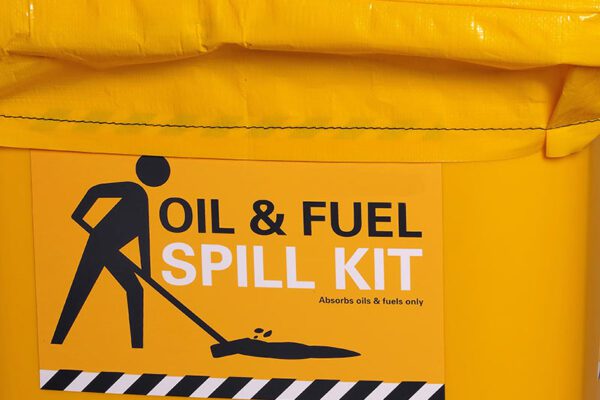
What Is a Spill Kit & How Do I Choose One?
A spill kit is composed of items that help you quickly and effectively clean up liquid spills. These commonly consist of absorbent and/or adsorbent materials, personal protective equipment and disposal items. Additional items to keep with your spill kit may include a product like Plug n’ Dike putty (a product used to seal holes on some hazardous product containers) and a spill tray that can be quickly put in place to catch and contain leaking fluid.
Spill kits are used right away to contain, control and clean up affected areas. There are many reasons for doing this, such as preventing or reducing the risk of:
- A slip, trip or fall
- Environmental contamination (land, water)
- Chemical exposures (people, pets, wildlife or livestock)
- Equipment damage
Choosing a Spill Kit
Step 1: Identify the types of liquid chemicals on the farm. Determine whether they are oils, fuels, chemicals or general-purpose products. There are generally three basic types of spill kits:
- General-purpose spill kits. These kits are highly versatile and can handle a range of spills, including both liquid and solid materials.
- Universal spill kits. These kits can be used for both water-based and oil-based spills.
- Oil-only spill These kits are designed to absorb oil and petroleum products, but they don’t absorb water.
- Chemical spill kits. These may also be referred to as “Hazmat spill kits.” They are designed to handle hazardous chemicals (e.g., pesticides).
Step 2: Determine the potential volume of a spill. Would it be relatively small (e.g., 15 litres) or could it be quite large (e.g., 200, 500 or even 1,000 litres)?
Step 3: Determine where the kit will be located, so that it is easily accessible in the event of a spill.
Step 4: Identify the conditions under which the kit will be stored, such as in a vehicle, a heated shop or outdoors.
Important: When determining how many spill kits you will need, consider the farm size, layout and spill risk areas.
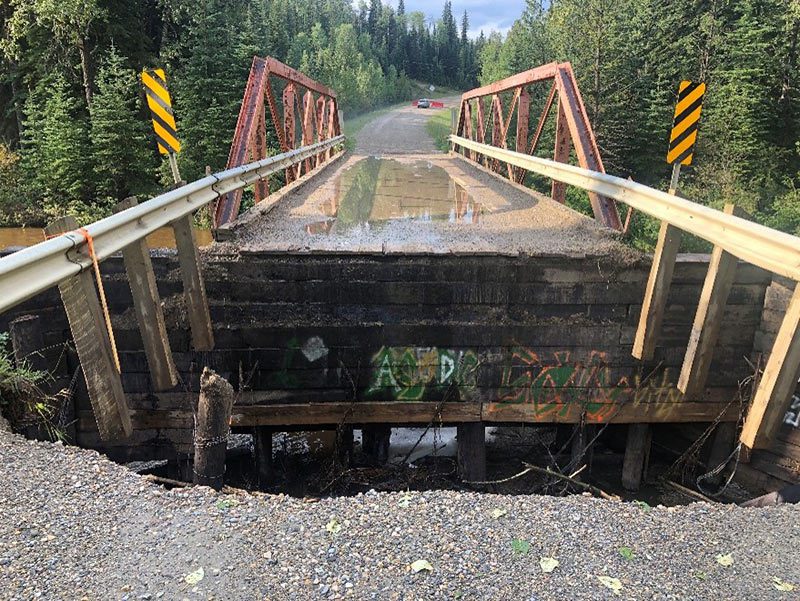
First Fires…. Then Floods
Wildfires don’t just change the landscape, they change the ground itself. Under normal conditions, plants and soil absorb rain and reduce runoff. However, after a wildfire, the vegetation is gone, and the ground is left charred and hardened, resulting in drastically increased runoff. This means areas not normally prone to floods can experience one. So, what should you do?
Plan and prepare! This includes developing a Flood Emergency Action Plan tailored to your farm’s specific needs and resources. Refer to Module 7: Emergency Preparedness & Management of the Alberta FarmSafe Plan Manual, online FarmSafe Plan Workbook (this has customizable templates to help you) and the free FarmSafe Plan Learning Program.
Check out this article and videos from CBC News: Edson, Yellowhead County struggle with flooding after wildfire: ‘One extreme to the next’ | Globalnews.ca
Additional Resource: Alberta Government’s Workplace health and safety after a flood

If you have farm-specific health and safety questions or require support relating to health and safety on your farm, please contact AgSafe Alberta at info@agsafeab.ca.
You may be eligible for onsite farm visits and up to 10 hours of advisor support at no cost!
OHCOW’s Heat Stress Toolkit Is Next Level!
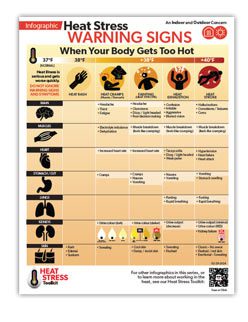
Heat stress is a significant threat to agricultural workers across the country, and thanks to Occupational Health Clinics for Ontario Workers Inc. (OHCOW), protecting them has just become easier.
OHCOW’s Heat Stress Toolkit features numerous excellent videos, infographics and guides, available in English, French and Spanish, to help you protect your workers.
One of the most impressive resources is the Heat Stress Calculator. This easy-to-use online tool allows you to calculate heat stress in workers based on the humidex and develop a response plan in minutes, all for free. Simply input information you have gathered onsite (or use data from Environment Canada for your area) and details relating to your specific operation and task, and you can generate a response plan and print it off for your workers and your files.
A few examples of what you can find are provided below:
OHCOW – Heat Stress Toolkit
OHCOW – Recognizing Heat Stress Video
OHCOW – Heat Stress – A Life-threatening Occupational Illness with Short and Long Term Effects
OHCOW – Heat Stress Effects Infographic
CONTACT US
